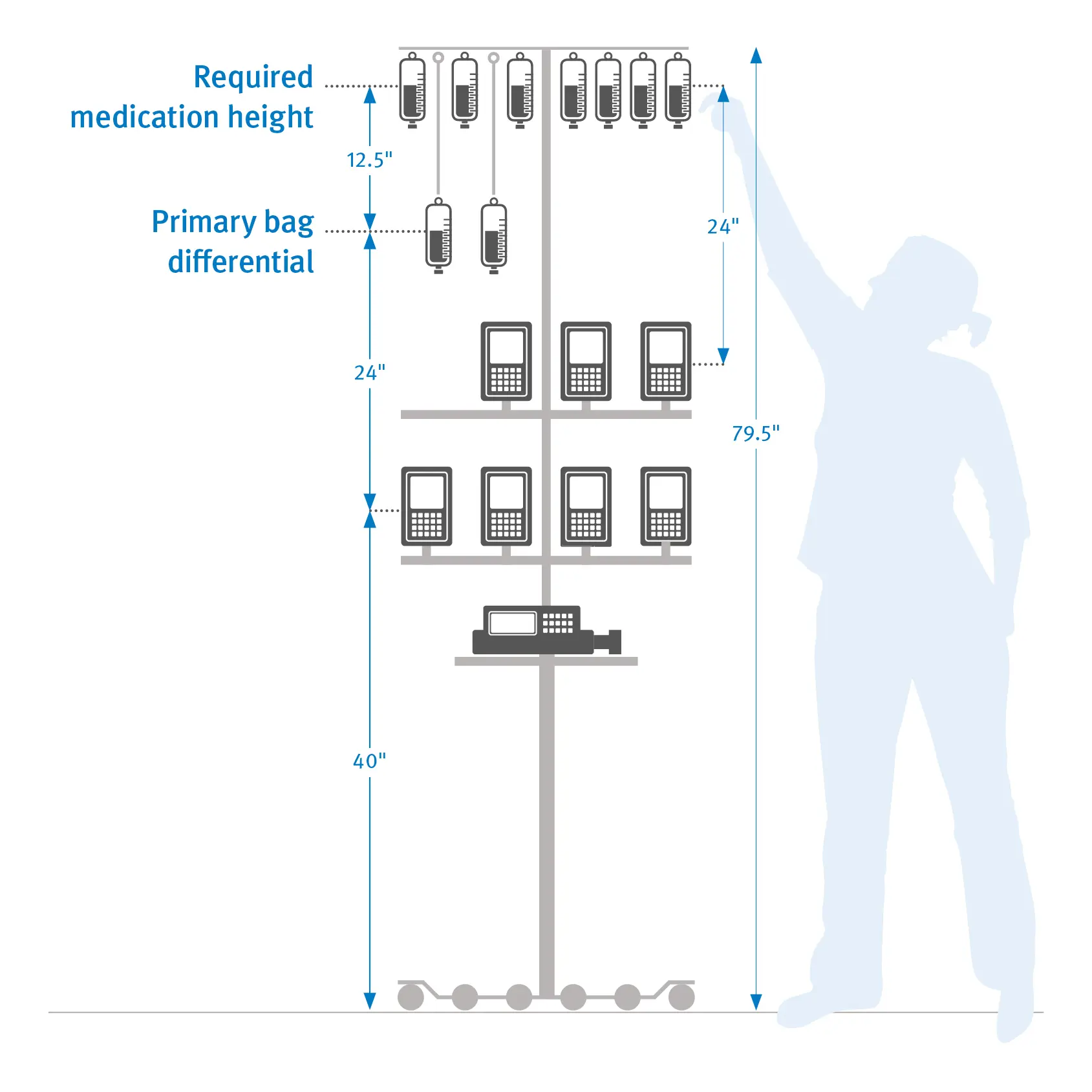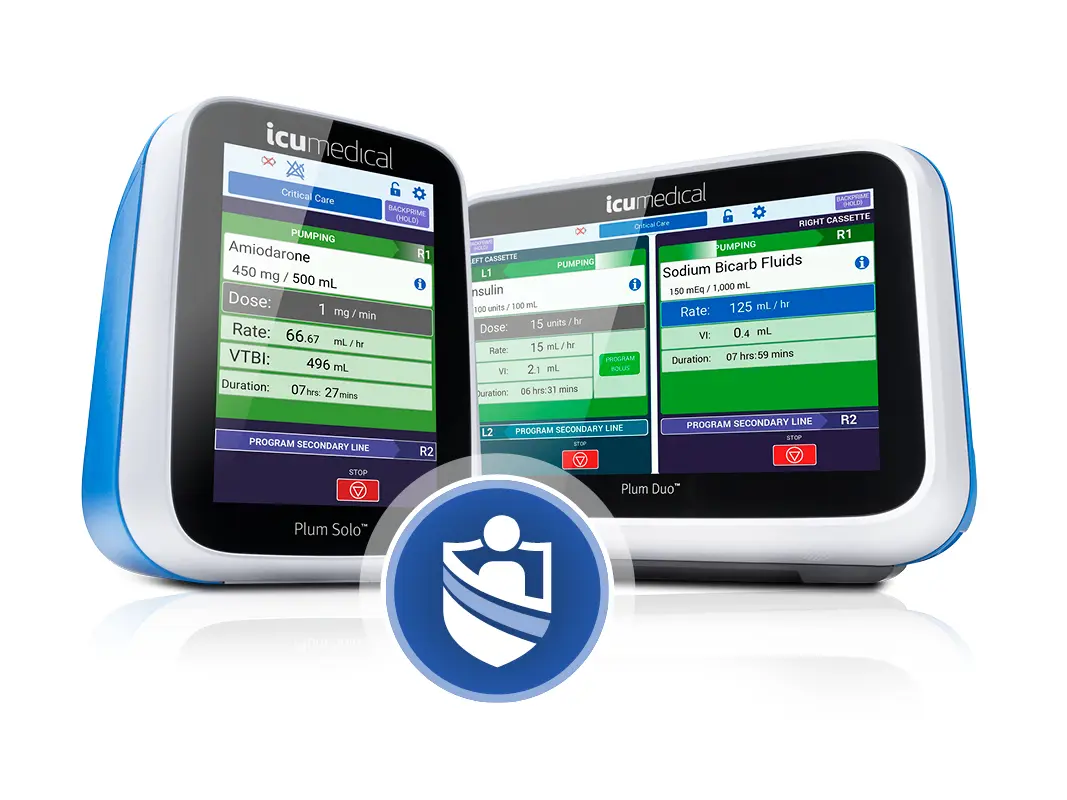Introducing Precision Infusion Pumps
The New Wave of IV Safety Products
A new kind of IV pump, delivering consistent infusion accuracy under real-world conditions
Infusion therapy has come a long way with smart safety software and dose error reduction systems, closing some safety gaps. But traditional infusion pumps still fall short, creating risk where precision matters most. Missed secondary infusions, flawed data, and hidden variability all stem from traditional pumps built for perfect conditions—conditions that rarely exist in the real world.
Patients move. IV bags shift. Care is complicated. These everyday realities turn traditional pumps into a hidden liability, introducing errors that could jeopardize care, distort infusion data, and pile on avoidable costs through complications and extended hospital stays.
When traditional pumps fall short, nurses often face additional tasks and cognitive load to compensate—adjusting setups, troubleshooting alarms, and verifying delivery—pulling them away from direct patient care. Nurses entered healthcare to connect and care for patients, not to manage unpredictable technology.
The answer? Precision IV pumps. Designed for the real-world demands of healthcare, these pumps help reduce unseen risks and help to ensure the consistent accuracy and reliability clinicians need to make informed decisions, trust their data, and reduce the financial toll of imprecise care.
This is the next wave in IV safety—one that helps restore confidence, strengthen connected care, and bring much-needed calm to the changing tides of clinical practice.
The hidden complexity behind traditional infusion pumps brings unseen risks and variability.

Most clinicians assume their traditional pumps perform reliably, but deviations from exact specifications can create variability:
- Position Sensitivity: Whether primary or piggyback, traditional pump flow rate depends on bag height. If the bag is too low, the flow is too slow, leading to under-delivery. Too high? Over-delivery. Manufacturers often recommend exact bag placement, like primaries must hang 20 inches above the pump—but are nurses expected to measure that every time? What about when patients are moved or pumps are repositioned? Studies confirm setup compliance is rare, leading to widespread unnoticed variability.
- Secondary Line Failures: Closed clamps, shifting pressures, or improper setups can halt secondary infusions, leaving patients underdosed.
- External Factors: Is the medication more viscous? Is the medication cold? Is there backpressure from a lot of fluids going into a single catheter? Traditional pumps don’t know the difference.
These issues are invisible at the bedside but can lead to dangerous downstream consequences, forcing clinicians to troubleshoot problems they didn’t create.
When pumps fail, care unravels.
Picture this: a patient in the ICU receiving vasopressors from a traditional pump to stabilize blood pressure. Pressure dips and the nurse increases the dose, unknowingly compensating for an under-delivering pump caused by a low-hung bag (“if the bag is low, the flow is slow”). Later, the patient is repositioned, shifting the pump’s relative position and causing over-delivery. The result? Inconsistent blood pressure spikes and risk for serious complications and confusion—all due to unseen variability.
Now think about what gets recorded in the infusion documentation. Doses are logged as delivered, but inaccurate pump performance means the records are flawed. Clinicians make critical decisions based on bad data, piling risk upon risk. Nurses are burdened with additional tasks, patient outcomes can suffer, and your facility foots the bill.
Precision isn’t just a necessary feature—it’s the foundation of trust in care delivery.
Precision infusion pumps provide consistent performance you can trust.
Designed for the realities of modern, real-world care, precision pumps don’t depend on gravity or perfect setups—they adapt to evolving clinical situations, offering:
- Unmatched Accuracy: Consistent ±3% delivery accuracy, no matter the medication or where the bag, pump, or patient is positioned.
- Reliable Performance: Every dose, every drop delivered. No waste, no under-delivery, no costs from hidden variability.
- Confidence in Care: Trust the pump. Trust the data. Deliver care with confidence.
Precision pumps close the gap between intention and reality.
These pumps deliver what they're programmed to deliver. They know if you forgot to open a clamp on a secondary infusion. They let you titrate with certainty, knowing that what you intend to infuse is exactly what’s infused.
- For Clinicians: Fewer surprises. More informed decisions. More time for patients.
- For Patients: The infusions you intend. The safe care they deserve.
- For Healthcare Facilities: Reliable data to drive smarter operations and fewer costly complications from imprecise infusions.

Connect Smarter. Care Safer.™
Learn how precision infusion pumps ensure consistent delivery, accurate data, and accurate healthcare decisions.
Rx only. For safe and proper use, refer to the Instructions for Use.




